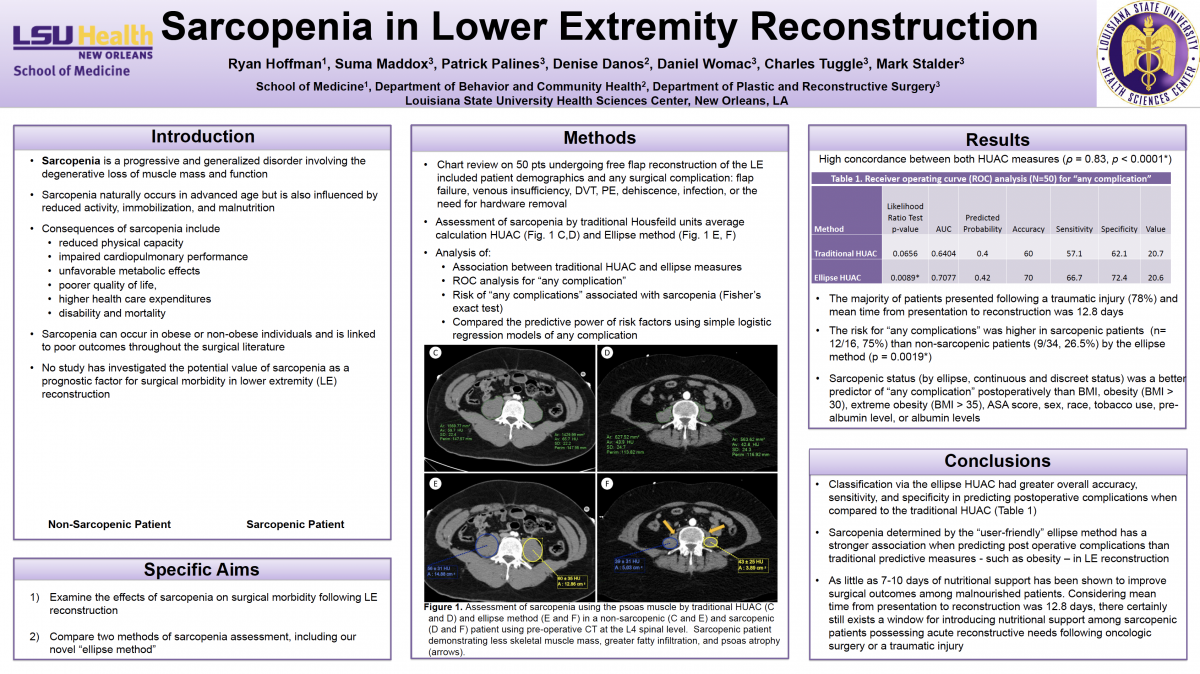Clinical Science | Plastic Surgery
SARCOPENIA IN LOWER EXTREMITY RECONSTRUCTION
Ryan Hoffman, Suma Maddox, Patrick Palines, Denise Danos, Daniel Womac, Charles Tuggle, Mark Stalder
ePoster Presenter: Ryan Hoffman BS, LSU Health – New Orleans
Background: Sarcopenia is a progressive and generalized disorder involving the degenerative loss of muscle mass and function. Sarcopenia is linked to poor outcomes throughout the literature and can be assessed on preoperative imaging to aid in risk stratification.
Objectives: This study examined the effects of sarcopenia on surgical morbidity following free flap lower extremity (LE) reconstruction, and also compared two methods of assessment, one of which is novel (“ellipse method”).
Methods: A retrospective cohort study of fifty patients receiving free flap-based reconstruction of the LE was performed. Bilateral psoas density and area were quantified at L4 through tracing (“traditional method”) and encircling (“ellipse method”) to calculate Hounsfield Unit average calculation (HUAC). ROC analysis determined separate HUAC cutoffs (≤ 20.7 vs. ≤ 20.6) for sarcopenia, and other statistical analyses compared pre- and postoperative morbidity.
Results: Twelve patients (24%) met criteria for sarcopenia via the traditional method and sixteen (32%) via the ellipse method. By both methods, sarcopenic patients were more likely to be female, older, have diabetes, higher ASA scores, and lower serum prealbumin. The ellipse method was found to be more accurate, sensitive, and specific than the traditional method in predicting postoperative morbidity (p = 0.009). Via the ellipse method, sarcopenic patients were at higher risk for any complication (p = 0.002), and for deep vein thrombus or pulmonary embolism via the traditional method (p = 0.047).
Conclusion: Sarcopenia is associated with greater preoperative medical comorbidities and postoperative complications in the setting of LE reconstruction. The novel ellipse method is a simplified and accurate method of assessing sarcopenia that can be easily performed in the clinical setting.

